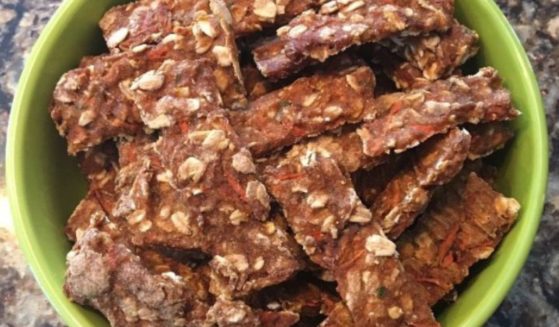Growing Fruits and Vegetables for Your Dog
Many veterinarians will agree that adding fresh vegetables to your pet’s diet is good for them. Here are a few fruits and vegetables your pooch will enjoy.
Apples. Many dogs love apples either because of the taste or crunch. Apples contain vitamins A and C and are a great source of fiber. Do not feed apple seeds to your dog, as they contain trace amounts of toxins.
Blueberries. Fresh or frozen, dogs love blueberries. With high levels of antioxidants boosting your dog’s immune system, blueberries make a great treat. Research from the University of Alaska suggests dogs that eat blueberries have muscles that recover quicker after rigorous activity than dogs that did not eat blueberries.
Broccoli. Dogs, like people, seem to reap the cancer fighting benefits of broccoli. However, broccoli should be fed sparingly as there is a weak toxin called isothiocyanate that may cause gastric upset in your pooch. Broccoli is a good source of vitamin A.
Carrots. These can be a nutritious snack for your dog. They are not only tasty, but also full of fiber, beta-carotene and vitamin A. This high-fiber vegetable is good for dogs’ eyes and coat health.
Cucumbers. Even dogs like a cool cucumber on a hot day. The tough, waxy skin may cause gastric upset, so peeled is preferred by most dogs. The vitamin C in this crunchy treat is an added bonus.
Spinach. This is among the most nutrient-dense vegetables, with high levels of iron, beta-carotene, calcium, and many other vitamins. For best absorption, feed your dog chopped spinach.
Green beans. These are a great addition to a dog’s kibble to aid in weight loss.
Pumpkin. A fantastic treat for your dog is pumpkin, and it is prescribed by many veterinarians as a diet supplement. This garden hero is loaded with health benefits, including fiber, and helps with weight loss. It can bulk up stools or constipation if your pet is experiencing these issues.
Raspberries and strawberries. Both berries are also a favored garden treat. Your pet may just help themselves once they discover these delectable fruits. You may need to restrict access to the garden, as too many berries can cause diarrhea.
Sweet potatoes. Veterinarians also recommend sweet potatoes. They are loaded with vitamins, minerals, calcium, and fiber. Sweet potatoes are a great food for many dogs with allergies. These sweet gems keep your dog’s body strong and healthy.
Tomatoes. Give your dog only ripe tomatoes. Green tomatoes can be dangerous for your pet. These tasty fruits are full of vitamins, and some dogs will eat them right off the vine.
Watermelon. Vitamins from watermelon include A, B-6, and C, and they are high in potassium. This treat is a great way to keep your dog hydrated, too. Remove seeds, as they may cause intestinal blockages.
Zucchini. This offers dogs vitamins, minerals, and fiber. Shredding and freezing extra zucchini in ice cube trays is a welcomed summer treat.
There are a few garden vegetables your pet should not consume — onions, grapes, and raisins top that list.
For a more complete list of fruits and vegetables your dog should and should not eat, visit the American Kennel Club’s article, “Fruits and Vegetables Dogs Can or Can’t Eat.”
Recipe for Fruit and Veggie Sticks for dogs

Here is a snack from Doggy Dessert Chef your dog will love that has no added chemicals or preservatives.
Ingredients
- 1/2 cup pumpkin puree
- 1 banana
- 1 cup carrots shredded
- 1/4 cup sugar free applesauce
- 1 cup whole wheat flour
- 1 cup rolled oats
- 1 tsp dried parsley
Instructions
Preheat oven to 350 degrees Fahrenheit. Line a baking sheet with parchment paper. Mix all ingredients in a large bowl.
Spread by hand onto the prepared baking sheet 1/4-inch thick. Cut with a pizza cutter into small sticks. Bake for 20-25 minutes.
Cool and break into pieces. Refrigerate for up to two weeks.
This article appeared originally on Michigan State University Extension.
Truth and Accuracy
We are committed to truth and accuracy in all of our journalism. Read our editorial standards.
Advertise with The Western Journal and reach millions of highly engaged readers, while supporting our work. Advertise Today.












